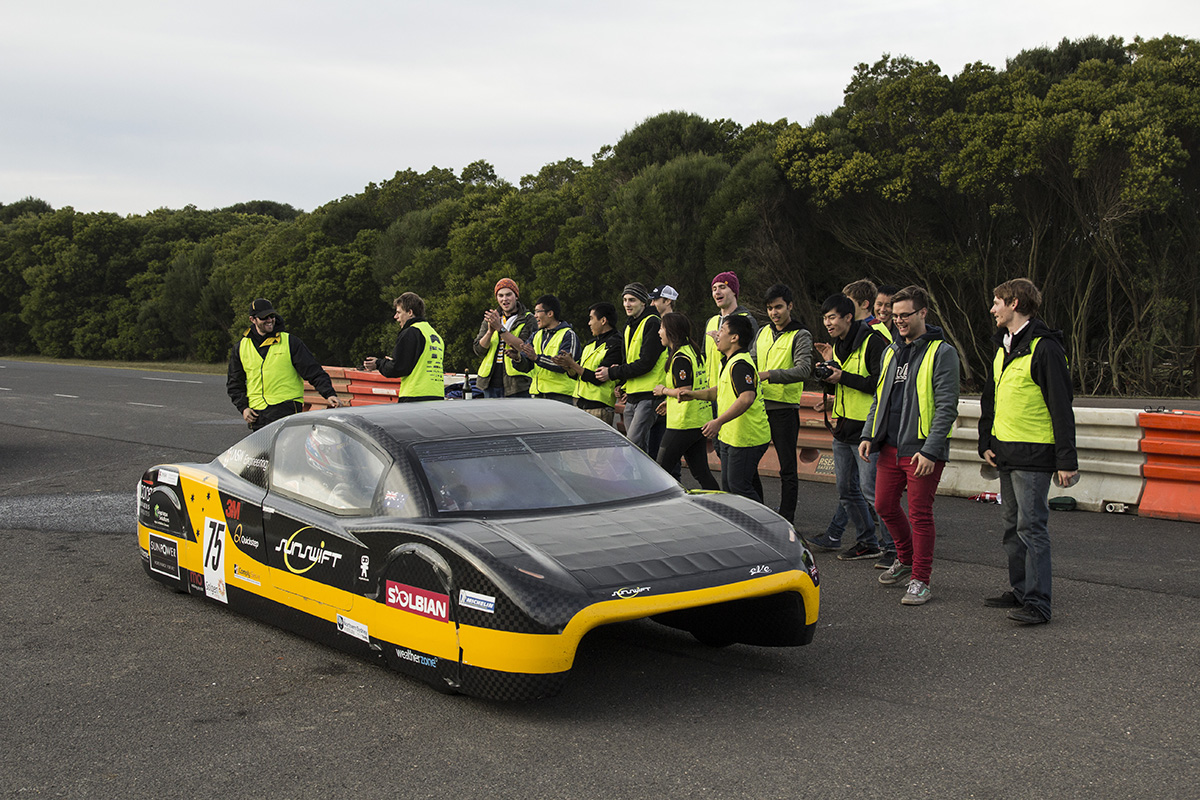
The setting and improvement of Speed Records has been synonymous with motorsport since the motor car was first built. Generally, the publicity and accolades associated with speed records has been directed to the driver who has covered a measured
kilometre or mile with a flying start in the shortest time possible.
The person achieving this feat is anointed with the title ‘the World Land Speed Record holder’ and this speed is currently 1223.657km/h for the flying kilometre, and 763.035mph for the flying mile.
Such attempts on the land speed
record are rare, as they are very expensive and are usually undertaken on salt lakes, which provide a relatively dense, hard and flat surface and are usually quite expansive. Runways of up to 25 miles in length are also sought for such attempts. There
are only a few places in Australia where such attempts can be made. Lakes Eyre and Gairdner in South Australia are two.
In order to provide for the many different types of vehicles that exist, the creation of classes for record attempts
has been made. It caters for standard production cars, modified vehicles, alternatively powered vehicles, as well as rocket powered cars – all with varying engine capacities.
Additionally, the types of record attempts can be divided into three groups – acceleration records, distance records and time records. These classes and groups provide for many types and configurations of cars and for varying distances over which
records may be established. Acceleration attempts cover distances of 1/8 and ¼ mile from a standing start, distance records range from 0.5 kilometres to 100,000 miles, and time records extend from one hour to 24 hours.
Therefore, it is not necessary for all attempts to occur on salt lakes, and many race tracks and runways make a more than adequate location.
Speed Records are recognised at the following four levels:
1. LOCAL RECORD
A record established on a permanent or temporary track approved by Motorsport Australia, whatever the nationality of the competitor. A list of these records is maintained by each track.
2. NATIONAL RECORD
A record
established or broken in conformity with the rules established by Motorsport Australia within Australia and recognised as such by Motorsport Australia, regardless of the nationality of the competitor. A national record is said to be a ‘class
record’ if it is the best result obtained in one of the classes into which the types of cars eligible for the attempt are subdivided, or ‘absolute record’ if it is the best result, not taking the classes into account.
3. INTERNATIONAL RECORD
A record recognised by the FIA as the best performance of its class.
4. WORLD RECORD
A record recognised by the FIA as the best performance irrespective of class.
The overview for the conduct of
Speed Records is found within the Motorsport Australia National Competition Rules.
In addition, Motorsport Australia
has reviewed its list of National Records. The list of records has been split into three groups based on a decision by the then Board of CAMS in 1983 which brought the requirements for recognition of speed records in line with that of the FIA.
Pursuant to the decision by the Board, the existing time and distance records were transferred to new FIA category designations with no new records able to be set under the old requirements. Therefore, the records existing before November 1983 will remain
forevermore unchallenged.
However, the decision meant that all available records were declared vacant and able to be filled under the newly adopted FIA requirements for a speed record attempt. There are still many vacant classes for which
no national records have been set. Due to commercial reasons, the time and distance records established at You Yangs Proving Ground are listed separately in order to enable these records to be preserved.